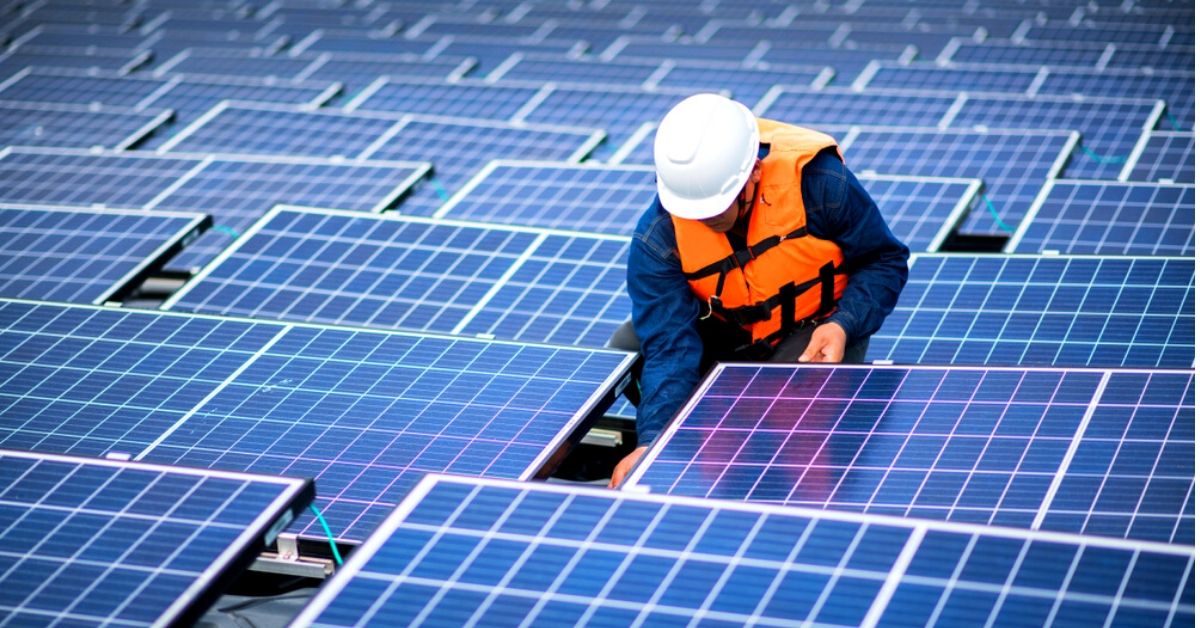To generate enough energy to power the whole United States, around 18.5 billion solar panels would be necessary. Last year, the solar energy industry added more employment in the United States than any other energy subsector.
A healthy solar panel can save you money while contributing clean electricity to the grid. But, like anything mechanical, your solar panels need tender loving care to keep them in tip-top shape.
Outdoor solar panels produce as much energy as they can. You don’t have to worry about using these panels, but regular solar panel maintenance matters. These panels degrade faster in extreme temperatures. They’ll last longer if you take care of them.
Here are seven must-know things you need to do to keep your panels in running condition.
- Regular Cleaning for Optimal Efficiency
First, the solar panels should be inspected to identify potential damage, such as corrosion or cracks. Then, brush off any dirt, dust, and particles that may have accumulated on the panel’s surface. To do this effectively, use lint-free rags and soft-bristled brushes.
It’s also essential to clear away any debris on the roof. It will ensure direct sunlight reaches the solar panels. Provide a ladder to secure the surface.
Washing the panels with mild soap and warm water is another good way to extend the system’s life. There should be regular maintenance to ensure the optimal efficiency of solar panels for the greatest energy harvesting. Remember to clean your solar panels consistently.
- Checking for Rooftop Accessibility
When attempting to access a rooftop, it is critical to consider many factors like height, size, and safety. Any rooftop needs a secure platform to access the solar panels comfortably. It means ensuring that the ladder or other equipment used to access the rooftop is stable and within OSHA standards.
You should remove all the guardrails, banners, and other objects that can cause an obstruction. All the solar panels must be thoroughly checked for safety and to ensure that all components are functioning correctly.
Cleaning solar panels is a tedious and vital job. Access to rooftops is a significant factor in conducting the upkeep for optimal performance.
- Identifying Electrical Issues
Identifying any electrical issues is essential to ensure the best and most cost-effective use of solar energy. Electrical problems could include faulty wiring, short circuits, or damaged components. Inspecting the wiring for signs of wear and tear or damage is necessary.
It’s essential to check the panels for any signs of damage that could impede energy flow. Contact an electrician or solar specialist to repair any electrical issues so the board is not damaged further.
- Repairing Inverter and Junction Boxes
Repairing inverters and junction boxes are part of routine maintenance and should be addressed. To fix them, a technician should ensure that the problem has been isolated.
The first thing to do is test the wires and connectors. Next, replace the inverters or junction boxes if the problem occurs. Then, check the transformer and the circuit breaker.
Once you check and replace all the components, You need to ensure that the system is grounded correctly and functioning.
- Scheduling Professional Maintenance Visits
Professional maintenance visits should occur every 6-12 months, depending on the age and performance of the system. During a visit, technicians can identify problems with the solar panel system. They may also make repairs to bring the system back to its optimal performance.
The solar panel maintenance company may inspect the wiring, inverters, and energy storage systems to detect any underlying issues. Through regular visits, you can ensure that your system is working as effectively as possible. It will also provide you get the highest return on your investment.
- Troubleshooting Solar Panel Systems
Checking connections, measuring output, and inspecting components are essential for troubleshooting a solar system. Troubleshooting solar should always begin with checking all links to ensure they are tight and secure. If the output is not what it should be, check the solar panels’ angles to ensure they are correctly aligned and not shaded by trees or debris.
Inspect all cables and wires for any physical damage that may prevent proper contact. Check the inverter and verify its settings are modified to ensure the system’s peak performance. Troubleshooting your solar panel system can be a breeze with these simple steps.
- Optimizing Panel Performance
The most important maintenance activity involves optimizing solar panels. During warm, dry summers, rainwater is often insufficient to keep your discussions free of dust and debris. Rain and wind can blow dirt onto the solar cells, which reduces the amount of sunlight that can reach the photovoltaic cells.
For best performance, wash your panels about every three months with a garden hose, a soft brush, and a mild detergent. Inspecting the system for broken or loose cables and mounts is also essential.
You can ensure that your solar panels perform optimally by performing these maintenance routines consistently. You can also observe the maximum amount of power from your solar system.
The Best Solar Panel Maintenance Guide
In conclusion, solar panel maintenance can ensure that your system lasts for many years and that you get the most electricity from them. You must understand how to care for your plan, from annual inspections to cleaning and monitoring. With this knowledge, you will surely get the most out of your solar panels in the long run.
Consider working with an experienced installer and maintainer to ensure your panels and system run smoothly. To learn more, research what’s involved with solar maintenance.
If this article has helped you in many ways, continue reading our other informative blogs today.

Welcome to our blog! My name is Yuvraj Kore, and I am a blogger who has been exploring the world of blogging since 2017. It all started back in 2014 when I attended a digital marketing program at college and learned about the intriguing world of blogging.
